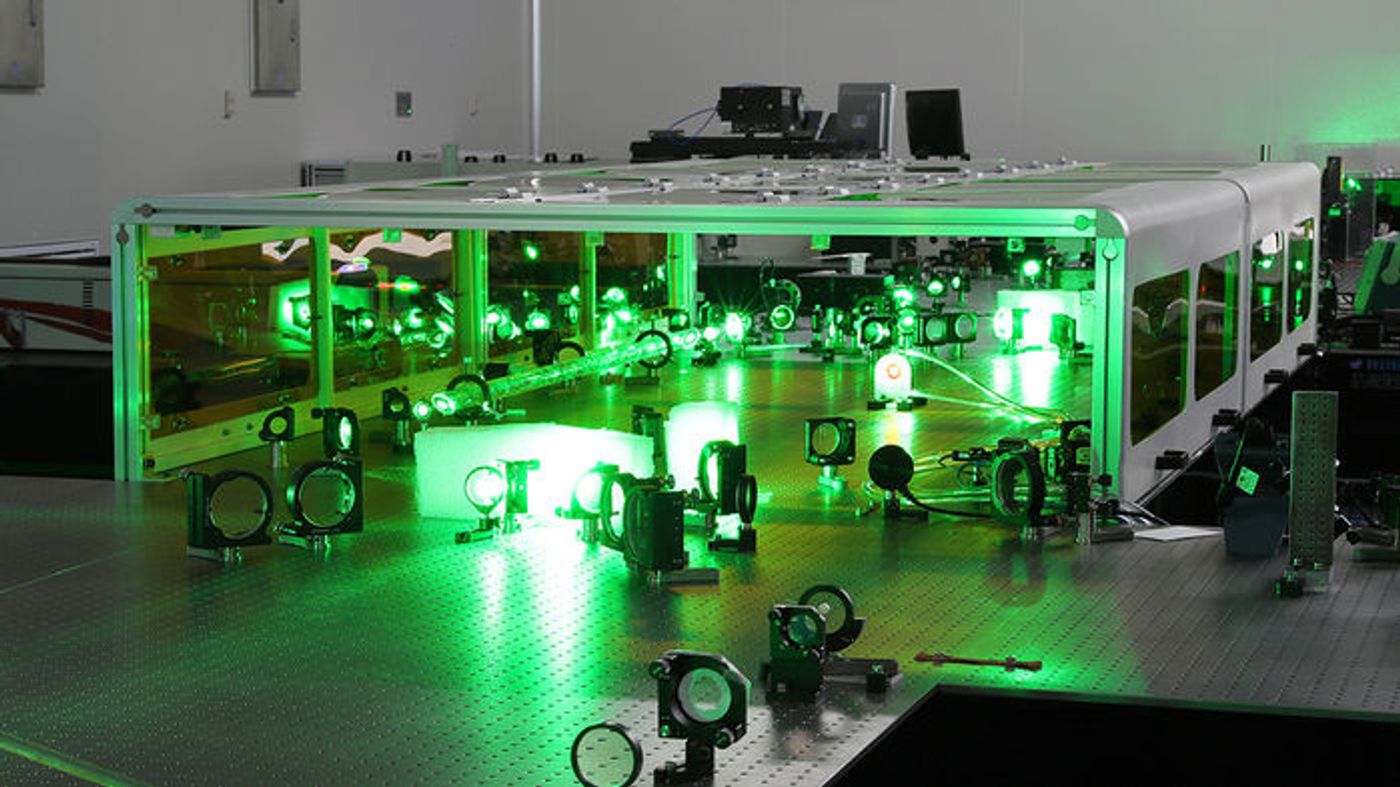China is building the most powerful laser that could create particles out of nothing
Lasers produce a tightly packed beam of photons at specific length by exciting electrons in a lasing material (gas, crystal or semiconductor). Photons are released when these excited electrons fall back to their original ground state. These emitted photons excite other electrons which result in an exponential cycle of electron excitation and photon release (the pumping mechanism) thereby generating laser light. Since the invention of the laser in 1960, scientists have been making more and more powerful lasers.
Physicist Dr. Ruxin Li and his team at Shanghai Superintense Laser Facility (SULF) are trying to build a most powerful laser in the world. In 2016, they have already developed a titanium-doped sapphire laser which reached a mind-boggling power of 5.3 petawatts (1 million billion = 1 peta). Highly powerful petawatts (PW) laser usually emits photons for very short time, generally in the range of trillions of a second. By the end of 2018, Ruxin Li’s team will try to break their own record by building a 10PW laser, which is equivalent to 1000 times output of all the world electricity production. His team intends to build a most powerful 100PW laser known as Station of Extreme Light (SEL) by the end of 2023. They will fire these extreme pulses of the laser in an underground chamber. Subjecting target of the 100PW laser will undergo extreme pressure and temperature not seen anywhere on this earth. One of the most promising applications of such a powerful laser will be to accelerate subatomic particles in tunes of large accelerator without building an expensive mile long tunnel (like CERN), for their use in high energy physics. Most exciting application of this 100PW laser would be ripping electrons and its antimatter counterpart, positrons, in a vacuum. It is perfect examples of interchangeable nature of matter and energy based on famous Einstein’s E=mC2 equation. In the fission reaction, the small amount of matter converts into the tremendous amount of energy, the reverse is also true where matter can be created if energy is large enough. The universe was created in the same way from energy during big-bang, but it is much harder to form matter from energy in the laboratory settings. However, a recent finding has shown that matter and antimatter particles forming and annihilating each other during the lightning strike on earth.
Philip Bucksbaum, an atomic physicist at Stanford University, says that China is “definitely leading the way” to build a 100PW laser. However, competition is heating up all over the World to make lasers in PW range due to their potential for their application in medicine, astrophysics, and material science. However, US lacks behind in building future high powered PW laser due to lack of funding. National Academics of Sciences, Engineering, and Medicine group has called upon Department of Energy to fund at least one high-power laser facility. The University of Rochester in New York has a plan to build 75PW laser called the Optical Parametric Amplifier Line (OPAL).
LHN Vignette - The Texas Petawatt Laser at UT Austin
The most likely contender to create particles in the vacuum will be SEL from China. A group of international scientists is convinced with the SEL design, and there is a hope that China’s government may approve the funding soon, which is around $100 million. SEL will function as an international user facility based on Dr. Li’s account. Therefore, other countries should not feel isolated from high power laser research.








